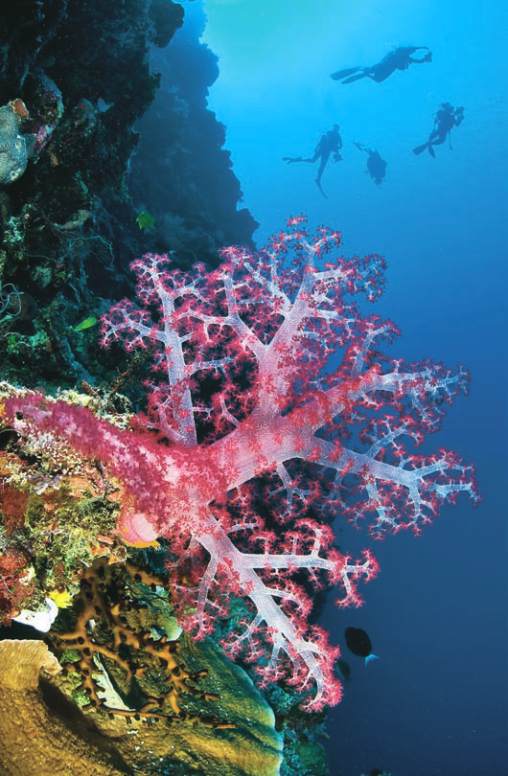Basic HTML Version


From the airplane window, reflected light of an impossibly
bright moon spreads across the darkness of the western
Pacific. It illuminates a small, idyllic set of islands. On a map
of the Pacific, these snippets of land are not easy to find;
they’re tiny specks set in a vast blue sea. At last the plane
finishes its descent, and the sultry scents and subtle sounds
of a Micronesian evening begin to envelop my senses.
This is where life moves more slowly — where coconut and
betel-nut palms whisper softly, fish jump and birds silently
soar. This is Palau, and its consummate beauty and mystique
are now legendary in the world of diving. Over the past
three decades, the country’s marine biodiversity and unique
terrestrial aesthetics have motivated an untold number of
dreamy descriptions littered with flowery adjectives and
inspired people from all over the world to marvel at the
islands’ wealth of marine resources.
THE MOON’S PULL
Upon reaching a land-based resort after a quick ride from the
airport, I immediately fall asleep in preparation for the days
ahead, dreaming of chaotic biological diversity, sleek sharks,
sizeable mantas, ghost-ridden World War II wrecks and
alien jellies. While the night progresses, the waxing moon’s
imperceptible gravitational pull acts on creatures throughout
Palau’s waters, its yellow-white light signaling to some that
the time for procreation is near. Within the lagoon, male
cardinalfish incubate embryonic offspring in their mouths,
developing anemonefish embryos ready themselves to hatch,
and golden rabbitfish begin to gather in dense schools in
preparation for mating aggregations.
Although Mother Nature can be fickle, bucking human
attempts to predict her every move, full and new moons are
typically when Palau’s marine life (from minute to massive)
70
|
SUMMER 2012
LUNAR INSPIRATION
BY ETHA DANIELS

